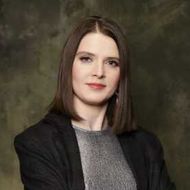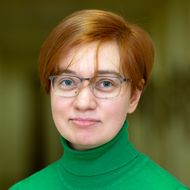“The Sports Economics Workshop at the iCare Conference has become a tradition”
The concluding events of the 11th International Conference on Applied Economics, iCare, included the workshop "Game On: Insights into Performance, Perception, and Strategy in Sports and Esports," organized by the International Laboratory of Intangible-driven Economy at HSE Perm, and the expert session "Researching Creative Industries in the Perm Region". The wide range of topics presented allowed for a better understanding of behavioral strategies not only in esports but also in other areas of the economy, while unique data provided different perspectives on economic issues.
Most of the workshop presentations focused on the esports discipline of Counter Strike. Experts presented research on player performance, strategic decision-making, and issues of discrimination. For instance, Vladimir Soluyanov, a research intern at the International Laboratory of Intangible-driven Economy, discussed the impact of masculinity on success in esports. Using facial recognition technology and measuring FWHR (Facial Width to Height Ratio), it was established that masculinity is important for winning.
The report by Evgenia Shenkman, junior researcher at IDlab, raised the issue of strategy for choosing game cards during a tournament. The research employed the methodological framework of game theory to analyze the decision-making process. The paper studied on the basis of what factors the optimal card choice is made.
Mikhail Usanin, research assistant intern at IDlab, analysed the relationship between home advantage and the probability of winning. Despite the fact that this issue has been studied in sports tournaments, this problematic has hardly been considered for cyber sports disciplines. The results of the study showed that home advantage has a positive effect on the probability of winning at both the individual and team level. And playing on the opponent's territory has a negative impact on the probability of victory.
In several studies, scientists have applied the experiment method to study discrimination in sports. Petr Parshakov, head of IDlab, made a presentation on the study of gender discrimination in Counter Strike. Experimental groups were divided into control and test sample, who were shown real and blurred videos of men's and women's games. The results revealed that men do not discriminate against women, while women discriminate against female players. In addition, the longer a person looks at a picture of a player, the less discriminatory they are later on. A report by luliia Naidenova, deputy head of IDlab, described an experiment to study racial discrimination in soccer. Three identical violation videos showed players with different skin colors. Respondents had to decide whether they would give a yellow or red card for the infraction. It turned out that respondents discriminated against players with darker skin, but not black skin.
Three sections of the workshop were devoted to economic issues. In the section on sports behavior and decision making, Dmitry Dagaev, head of the NUL of Sports Research at the National Research University Higher School of Economics, made a presentation on decision making on pit stop in Formula 1. The main problematic question - whether drivers play strategically - was answered in the affirmative. It was found that drivers drive according to the theoretical optimum and up to a certain point try not to go to the pit stop.

Dmitry Dagayev, Head of the NUL of Sports Research at HSE
The Sports Economics Workshop at the iCare conference has become a tradition. This year there were 14 sports papers of a very high level, typical for international conferences. This is not surprising - researchers from Perm and Moscow campuses with publications in leading industry journals gathered. It is very pleasant that young research assistants took part in the conference. This gives hope for the natural reproduction of scientific personnel.
For me, my presentation at the conference was very useful: we received a number of comments on the paper and are already discussing them with my co-authors. I very much hope that next year the tradition of the iCare conference will continue and we will be able to gather again at the Perm campus.
Egor Ivanov, research assistant at IDlab, presented a study on strategy selection in soccer. In the paper, he investigated the influence of profit or victory on strategy in a match. It found that in most cases, teams maximize their wins rather than profits. However, the NBA and NFL use mixed strategies.
The question of the correspondence between the level of soccer players' salaries, which are set by experts, and the crowd's opinions about the right salaries was considered in the report by Dmitry Kirpishchikov, an associate researcher at IDlab. Using machine learning methods, the authors of the paper showed that experts are better at predicting salaries than internet users. However, the experts' estimation can be supplemented by crowd estimation.
The final report by Elena Semerikova, a senior researcher at the Laboratory for Spatial Econometric Modeling of Socio-Economic Processes in Russia at the National Research University Higher School of Economics, was devoted to the relationship between sports infrastructure facilities and real estate prices. The researchers studied whether the presence of sports infrastructure affects the average price of apartments in a municipality. Based on big data, it was found that large sports buildings increase the cost and demand for housing.

Elena Semerikova, Senior Researcher of the Laboratory for Spatial Econometric Modeling of Socio-Economic Processes in Russia, National Research University Higher School of Economics (HSE)
My report covered the impact of sports infrastructure on real estate values in Moscow. In the study, we demonstrated that stadiums and sports fields increase the value of real estate in a district. In general, all the reports at the conference were interesting. I was surprised by non-standard approaches to data collection, for example, by measuring faces or movements on video.
The final events of the iCare conference were the sections “Analytics based on Artificial Intelligence” and the expert session “Research of Creative Industries in Perm region”. The first one touched upon the application of artificial intelligence methods to the study of sports. For example, Alexei Smirnov, a research assistant at IDlab, used artificial intelligence to identify burnout in cyber athletes' publications. The research team found that the presence of burnout can have a negative impact on game performance.
The report by Anna Provorova, junior researcher at the Center for Cognitive Neuroscience at the National Research University Higher School of Economics - Perm, demonstrated the experience of developing the NeuroSkate neural network, which is being implemented as part of the strategic project “Human Success and Autonomy in a Changing World”. NeuroSkate is able to recognize on video young athletes during figure skating training and the elements performed by them.
IDlab junior researcher Sofya Paklina demonstrated an approach to analyzing crowdfunding projects using Kickstarter data. The paper explores how different description characteristics, such as tone, length, and objectivity, affect project fees. It turns out that higher positivity and lower objectivity of the story are associated with a higher probability of reaching the goal.
At the expert session “Research of Creative Industries in Perm region” a discussion on the study of creative industries in the region took place. The report by Anastasia Bozhya-Volya, Associate Professor of the Department of Management at the National Research University Higher School of Economics - Perm, raised the issues of forming a classifier of types of activities and principles of what to classify as creative industries. This issue was further developed in the report on data sources by Dmitry Kashin and Svetlana Suslova, Associate Professors of the Department of Economics and Finance. The researchers discussed the principles of collecting and processing data on the subjects of creative industries and raised problematic questions about the quality and quantity of data. Tatyana Bukina, Head of the Department of Economics and Finance, proposed specific metrics for assessing the development of creative industries and ways to evaluate their contribution to the region's economy.

Anastasia Bozhya-Volya, Associate Professor, Department of Management, National Research University Higher School of Economics - Perm
The development of creative industries is currently recognized as one of the important potential drivers of economic growth and diversification both at the national and regional levels. This is especially important for Perm region as an old industrial region, where various creative industries have been actively developing in recent years.
The section was productive - we managed to exchange opinions of HSE experts in different fields (from applied economics to historical research), which, of course, has a synergistic effect. In addition, the invited experts, representatives of creative industries, also provided very significant remarks and comments on this issue.
At the Perm campus of the Higher School of Economics, this area of research is a logical continuation of the campus' educational activities in undergraduate and graduate programs in the fields of impression economy and design.
The invited guests highly appreciated the level of the conference and noted the importance of its organization. The workshop and expert session discussions allowed researchers to exchange experiences and ideas to improve and develop their projects.

Petr Parshakov, Head of Laboratory, International Laboratory of Intangible-driven Economy, National Research University Higher School of Economics - Perm
I liked the variety of reports at the conference. The topics were absolutely different, ranging from the cost of real estate in Moscow to cyber sports. In addition, it is important that a significant part of the reports were presented by young scientists, assistants and researchers, including those from Perm laboratories. It is great when young scientists participate in such a conference. And let's hope that next year there will be even more speakers from different universities in Russia and abroad.

Mariia Molodchik, Senior Researcher, International Laboratory of Intangible-driven Economy, National Research University Higher School of Economics - Perm
This year's iCare conference brought together fans of sports economics research. This is what made it possible to discuss in detail the topics of discrimination based on skin color, the implementation of home advantage in cyber sports, discuss the impact of sports infrastructure on real estate prices, and discuss modeling the behavior of economic agents under uncertainty. All studies were characterized by a high level of elaboration, reflecting methodological and empirical contribution to the development of the scientific field of sports economics. As practice shows, almost all the papers discussed at iCare are accepted for publication in leading foreign journals during the next year. Given the successful discussion of this year's papers, we can expect a series of papers from NUL Sport Research and IDlab in the near future. I wish everyone the soonest possible publications!

luliia Naidenova, Deputy Head of Laboratory, International Laboratory of Intangible-driven Economy, National Research University Higher School of Economics - Perm
The conference was held in a wonderful, warm and friendly atmosphere. The papers presented demonstrated the wide field of possibilities for sport research, including the study of different sports and the application of a variety of methodologies. Both theoretical models, papers with advanced econometrics and artificial intelligence based analysis were presented at the conference. All the papers generated lively interest and active discussion, which was one of the main indicators of the quality of the conference. I am sincerely grateful to all the participants who came from other cities, because personal communication plays an important role in scientific cooperation. I hope that new acquaintances will become the basis for the beginning of interesting projects in the future.

Evgeniya Shenkman, Junior Researcher at the International Laboratory of Intangible-driven Economy
This year, as in the past, the conference was thematically narrow. However, this is its own beauty: all the participants are deeply immersed in the topic, and there is no need for additional explanations. It was also interesting to see how diverse tools the participants use to solve similar problems. For example, my colleagues processed a video (hiding or blurring some of the images) for an almost real experiment, providing processed and unprocessed versions to the experimental and control groups. This is quite a non-trivial task, but this approach allowed us to create an almost natural experiment, which ultimately led to more accurate estimates of effects. This is simply inspiring!
